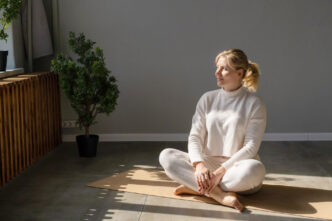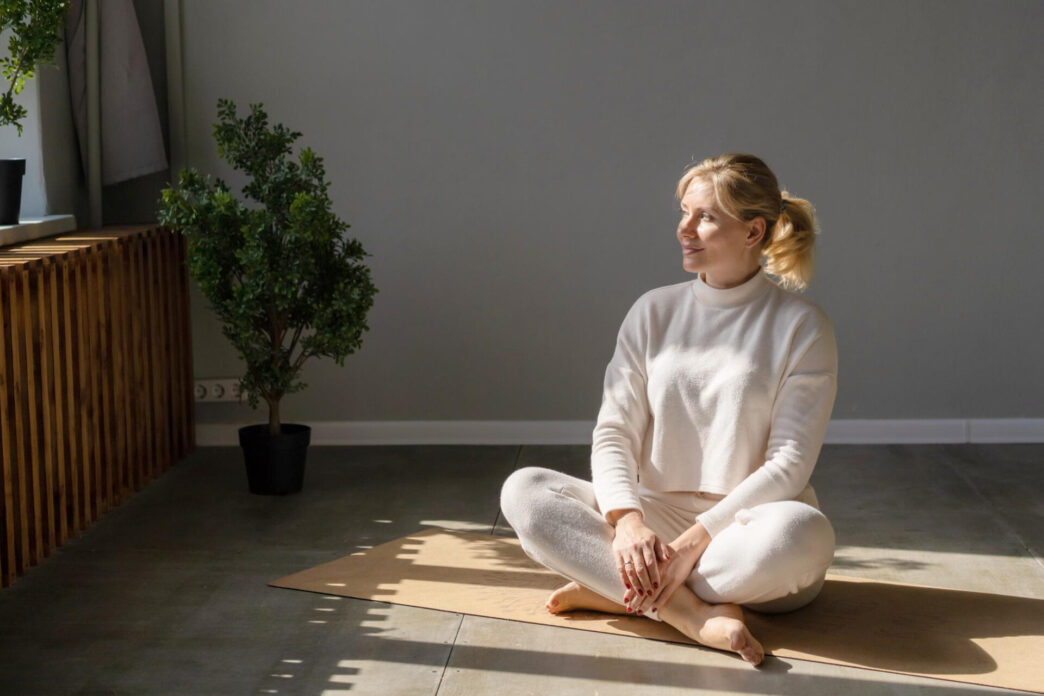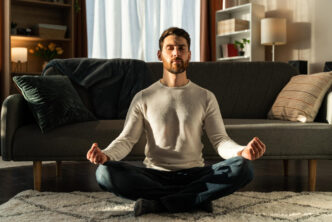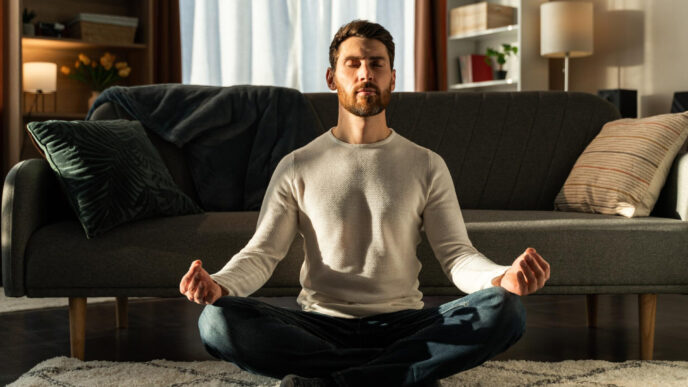Why We Struggle to Stay Calm in a Chaotic World
Modern life moves fast—too fast. Between global uncertainty, personal responsibilities, and a nonstop digital stream of information, our minds rarely get a break. We wake up to notifications, rush through meals, multitask through conversations, and collapse into bed mentally drained. This pace isn’t just exhausting—it’s unsustainable.
Yet deep down, we all crave something simpler:
✔️ Mental clarity
✔️ Emotional balance
✔️ A sense of peace—even when life feels out of control
So why is finding peace in a chaotic world so difficult?
🌪️ The Calm Crisis: An Epidemic of Overstimulation
We are constantly bombarded—by media, deadlines, noise, and expectations. Our nervous systems are overloaded, and the result is a widespread inability to focus, rest, or even breathe deeply. Many of us have become wired but tired: anxious on the inside, exhausted on the outside.
Even the moments designed for rest (scrolling on the couch, watching videos, casual conversations) are often not truly restful. We’re always “on,” always absorbing, never pausing.
“Almost everything will work again if you unplug it for a few minutes… including you.”
Anne Lamott
⚖️ The Cost of Disconnection—from Self and Stillness
We’ve forgotten how to connect with stillness. Instead of managing our minds, we let stress dictate our pace. We try to “power through” instead of slow down. The cost?
- We become reactive instead of reflective
- We lose sight of what really matters
- We forget how to just be
🌱 The Good News: Peace Is a Practice
Here’s what most people miss:
Calm isn’t something you find once and keep forever.
It’s something you build, protect, and practice—daily.
In this article, you’ll explore how to:
🧘♂️ Calm your mind using simple, proven techniques
💬 Handle pressure without spiraling into stress
🍃 Reduce anxiety naturally through mindful rituals and lifestyle choices
🏡 Create an environment that supports lasting inner peace
Whether you feel overwhelmed by responsibilities, overstimulated by technology, or just tired of being tired—this guide will help you reconnect with what you truly need:
A sense of calm that doesn’t disappear when life gets messy.
Understanding Stress and Anxiety in Today’s World
The Root Causes of Stress and Overwhelm
Stress is a natural response to challenges, but chronic stress can be harmful. Today’s world presents unique stressors, including:
✔️ Information Overload – Social media, news updates, and notifications bombard our minds 24/7.
✔️ Work Pressure – Many people struggle with long hours, job insecurity, and unrealistic expectations.
✔️ Financial Concerns – Rising costs, debt, and economic instability create persistent anxiety.
✔️ Social Expectations – The pressure to succeed, maintain relationships, and meet societal norms can feel overwhelming.
✔️ Lack of Downtime – The “always-on” culture leaves little room for relaxation and recovery.
Understanding these triggers is the first step toward reclaiming control over your mental well-being.
The Science of Stress: How It Affects the Brain and Body
Stress activates the body’s fight-or-flight response, triggering the release of cortisol and adrenaline. In small doses, this response is beneficial—it helps us react quickly to danger. However, chronic stress leads to:
🔹 Weakened Immune System – Increased susceptibility to illness and inflammation.
🔹 Cognitive Impairment – Memory problems, difficulty concentrating, and decision fatigue.
🔹 Emotional Dysregulation – Heightened anxiety, mood swings, and irritability.
🔹 Physical Health Issues – High blood pressure, digestive issues, and sleep disturbances.
Why Modern Technology Contributes to Stress Levels
Technology has transformed the way we live, but it also comes with downsides:
📱 Social Media Anxiety – Comparing yourself to others online can harm self-esteem.
🔔 Constant Notifications – Interruptions reduce focus and increase mental fatigue.
💻 Digital Addiction – Excessive screen time overstimulates the brain, making it harder to unwind.
🌙 Blue Light Exposure – Disrupts sleep cycles, leading to insomnia and exhaustion.
To combat these effects, it’s essential to set boundaries with technology and create digital detox habits that support your mental health.
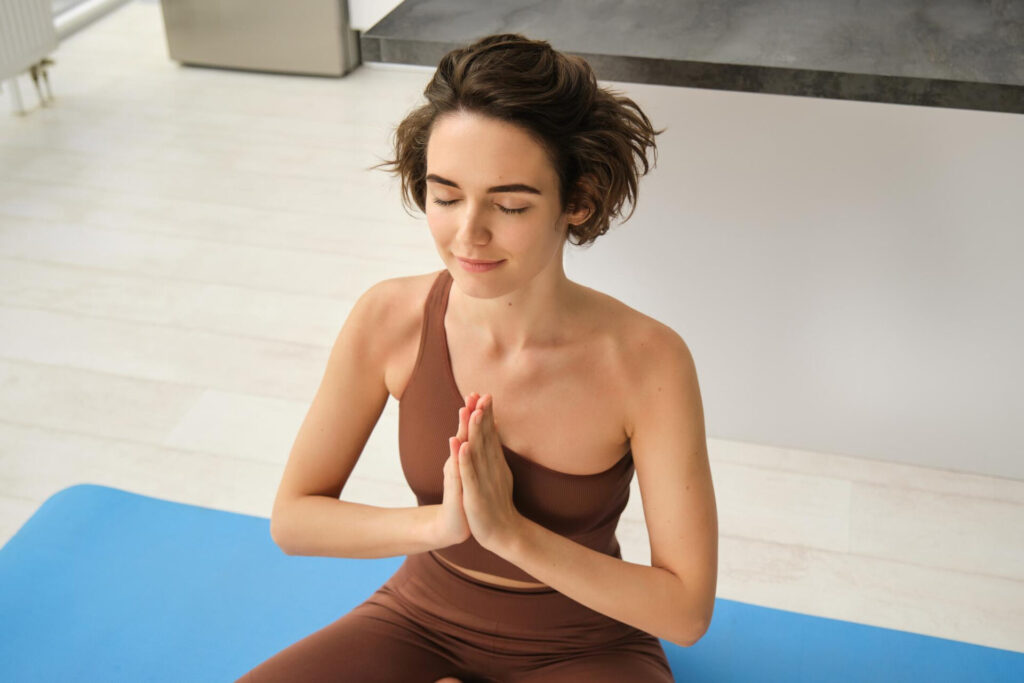
Developing a Calm Mindset
Cultivating inner peace begins with the mind. How you interpret and respond to stress determines how much it impacts you. Developing a calm mindset requires shifting your perspective, practicing gratitude, and managing your thoughts with intention.
The Power of Mindfulness in Daily Life
Mindfulness is the practice of being fully present in the moment without judgment. Research shows that mindfulness reduces stress, enhances emotional regulation, and improves overall well-being.
Simple ways to incorporate mindfulness into your routine:
✔️ Mindful Breathing – Take slow, deep breaths and focus on the sensation of air entering and leaving your body.
✔️ Mindful Eating – Savor each bite, chew slowly, and appreciate the flavors and textures of your food.
✔️ Mindful Walking – Pay attention to your steps, the feeling of the ground beneath your feet, and the rhythm of your movements.
✔️ Body Scan Meditation – Close your eyes and bring awareness to different parts of your body, releasing tension as you go.
✔️ Mindful Listening – When engaging in conversation, give your full attention without thinking about how you will respond.
Practicing mindfulness for just a few minutes daily can significantly reduce anxiety and improve focus.
Gratitude and Its Impact on Mental Resilience
Gratitude is a powerful antidote to stress and negativity. Studies show that practicing gratitude increases happiness, enhances resilience, and reduces cortisol levels.
How to Develop a Gratitude Practice:
📝 Keep a Gratitude Journal – Write down three things you’re grateful for each day.
❤️ Express Appreciation – Thank someone daily for something they’ve done for you.
🌅 Reframe Challenges – Instead of dwelling on difficulties, find lessons or growth opportunities in them.
🔄 Shift Focus from Lack to Abundance – Instead of thinking, “I don’t have enough,” reframe it as, “I have more than enough to be thankful for.”
By consistently acknowledging the good in life, you retrain your brain to focus on positivity rather than stress.
Reframing Negative Thoughts and Managing Self-Talk
Our thoughts shape our reality. If your inner dialogue is filled with self-criticism and negativity, stress becomes an inevitable part of life.
Techniques for Managing Self-Talk:
🧠 Cognitive Reframing – Challenge negative thoughts and replace them with more balanced perspectives. Example: Instead of “I always fail,” say, “I am learning and improving.”
🚫 Avoid Catastrophizing – Don’t assume the worst; instead, focus on realistic outcomes.
💬 Use Positive Affirmations – Repeat empowering statements such as “I am capable,” “I am in control,” or “I deserve peace.”
🌿 Practice Self-Compassion – Treat yourself with the same kindness and understanding that you would offer a friend.
A calm mindset is not about avoiding stress but about developing the ability to respond to it with clarity and composure.

Practical Techniques for Finding Calm
While mindset shifts are crucial for long-term resilience, sometimes we need immediate relief from stress. The following techniques offer practical ways to calm the mind and body in the moment.
Breathing Exercises for Instant Relaxation
Breathing techniques are one of the quickest and most effective ways to reduce stress and bring the nervous system back to a state of balance.
1. Box Breathing (4-4-4-4 Method)
✅ Inhale for 4 seconds
✅ Hold for 4 seconds
✅ Exhale for 4 seconds
✅ Hold for 4 seconds, then repeat
This method slows the heart rate and promotes deep relaxation. It’s widely used by Navy SEALs to stay calm under pressure.
2. 4-7-8 Breathing (The Relaxation Breath)
✅ Inhale deeply through the nose for 4 seconds
✅ Hold the breath for 7 seconds
✅ Exhale slowly through the mouth for 8 seconds
This technique activates the parasympathetic nervous system, reducing anxiety and preparing the body for sleep.
3. Diaphragmatic (Belly) Breathing
✅ Place one hand on your chest and the other on your abdomen
✅ Breathe deeply into your belly, ensuring the hand on your stomach rises while the one on your chest stays still
✅ Exhale fully and repeat for 5 minutes
Belly breathing lowers blood pressure and reduces the effects of cortisol.
Guided Meditation and Visualization
Meditation doesn’t require hours of sitting in silence. Even 5–10 minutes of focused meditation can provide mental clarity and relaxation.
🧘 Guided Meditations: Apps like Headspace and Calm offer step-by-step guidance for stress relief.
🎭 Visualization: Picture a peaceful place, such as a beach or forest, and imagine yourself fully immersed in that environment.
🔄 Body Scan Meditation: Start from your toes and work your way up, releasing tension in each part of the body.
Regular meditation rewires the brain, increasing gray matter in areas associated with emotional regulation.
The Role of Physical Movement in Stress Reduction
Stress builds up in the body. Physical activity releases endorphins, improves mood, and helps process emotions.
🏃♂️ Exercise: Even a short brisk walk can significantly lower cortisol levels.
🧘♀️ Yoga: A combination of deep breathing and gentle movement helps relax both the mind and muscles.
💃 Dancing: Moving freely to music is an excellent way to relieve tension and uplift your spirits.
When stress hits, don’t stay still—move your body to shift your energy.
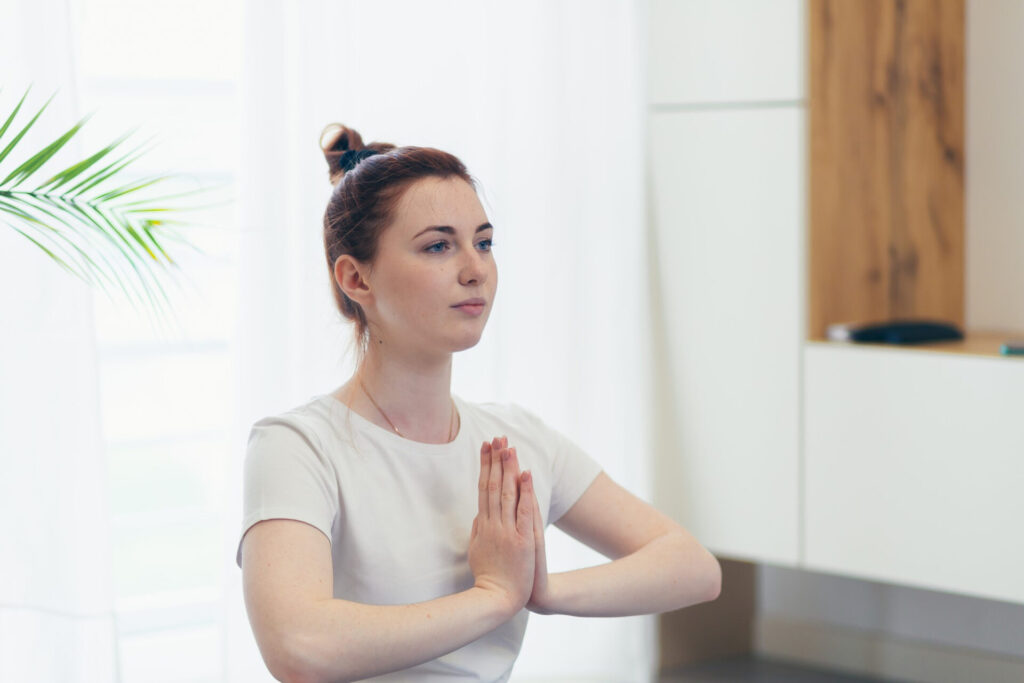
Creating a Calming Environment
Your surroundings have a profound impact on your mental state. A cluttered, chaotic space can contribute to stress, while a thoughtfully designed environment promotes relaxation and emotional balance. By making small adjustments, you can create a home and workspace that naturally supports a sense of calm.
Decluttering and Organizing for Mental Clarity
A cluttered space often leads to a cluttered mind. Research shows that excessive mess can increase cortisol levels, making it harder to focus and relax.
Steps to Create a More Peaceful Space:
✔️ Start Small – Declutter one area at a time (a desk, a closet, or a single drawer).
✔️ Use the “One-Year Rule” – If you haven’t used an item in the past year, consider donating or discarding it.
✔️ Adopt Minimalism – Keep only the essentials that bring value or joy to your life.
✔️ Organize with Purpose – Use labeled storage containers and designated spaces for items.
✔️ Create a Cleaning Routine – Set aside a few minutes daily to maintain a tidy space.
By simplifying your environment, you reduce mental distractions and create room for clarity and calm.
The Role of Nature in Reducing Stress
Spending time in nature is one of the most effective ways to lower stress and improve mood. Even small doses of greenery can make a big difference.
Ways to Incorporate Nature into Daily Life:
🌿 Indoor Plants – Houseplants purify the air and create a more soothing atmosphere.
☀️ Natural Light – Open your curtains and spend time near windows to benefit from sunlight.
🌳 Outdoor Breaks – Take short walks in a park or spend time in a garden.
🌊 Nature Sounds – Listen to recordings of ocean waves, birdsong, or rainfall to create a calming background.
Studies show that exposure to natural elements reduces anxiety, improves focus, and enhances overall well-being.
Soundscapes, Lighting, and Aromatherapy for Relaxation
Your sensory environment plays a crucial role in stress management.
1. Soundscapes:
🎵 White Noise or Pink Noise – Blocks distractions and improves concentration.
🎶 Soft Instrumental Music – Classical, lo-fi, or ambient music soothes the nervous system.
🌧️ Nature Sounds – Running water, thunderstorms, or wind in trees create a peaceful setting.
2. Lighting:
🕯️ Warm, Soft Lighting – Reduces eye strain and creates a cozy atmosphere.
💡 Dimmable Lamps – Allow for adjustable brightness to suit different moods.
🌅 Sunrise Alarm Clocks – Mimic natural dawn light, making mornings more gentle.
3. Aromatherapy:
🪻 Lavender – Known for its calming and sleep-promoting properties.
🍊 Citrus Scents – Energizing yet stress-relieving.
🌿 Eucalyptus & Peppermint – Help with mental clarity and deep breathing.
By intentionally designing your surroundings, you can create a sanctuary that promotes relaxation and well-being.
References and Inspirational Resources
- The Relaxation Response by Herbert Benson – Harvard University Press.
- The Science of Well-Being by Laurie Santos – Yale University / Coursera Course.
- American Psychological Association – Articles on stress, mindfulness, and emotional regulation.
- Mayo Clinic – Lifestyle tips for managing anxiety and creating calm.
- National Sleep Foundation – Research on sleep hygiene and mental health.
- Mindfulness for Beginners by Jon Kabat-Zinn – Sounds True Publishing.
- Psychology Today – Expert articles on anxiety reduction, resilience, and mindful living.

